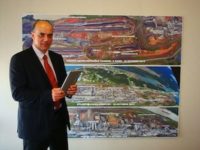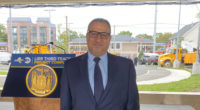Craig Covil, Arup infrastructure executive, played a key role in recent transit megaprojects in New York City, notably the Fulton Street Transit Center and the recently-opened Second Avenue Subway, for which a joint venture of AECOM and Arup provided engineering and architectural services. ENR interviewed Covil while he was in Sydney, Australia, working on yet another transit megaproject. These are condensed excerpts from the interview.
What are the latest trends in mass transit construction?
Every major city in the world is going through an urbanization factor – more than half the world’s populations are in cities, so metro systems are building out. Intercity mega-regional aspects are important as well. It’s not just metros and subways—it’s the connections to adjacent cities.
What are some of the cities where we can expect more of this kind of work?
Sydney. Chicago has a new master plan with Amtrak that’s all about connecting Metra to Amtrak long-haul trains. We’re working with local architects. In addition, they have a separate parallel process, reaching out to private developers with opportunity of overbuild on that station. In Baltimore, there are three teams shortlisted; we’re working for the developer there. In NYC we are working on Hudson Yards. We’re known for transit and buildings, so the intersection is an opportunity for overbuild. King’s Cross and Pancras [in London], Hong Kong, Singapore—the world is doing this.
How did the NYC transit projects incorporate new ways of designing and constructing?
I was the project director for the Fulton center. It was a real opportunity—the first new station in 50 years. After that came South Ferry and the #7 line and the Second Avenue Subway. If you look at the developments, the architecture and the engineering are modernized at a far quicker rate. We’re now playing with materials that are easier to clean. Glass, granite floors, stainless steel. There’s more LED lighting and daylighting.
In addition, we’re looking to increase the non-farebox revenue. Typically stations are all about fares. Now they’re about retail, advertising, etc. In Fulton Center there is retail both on the paid and unpaid sides. Bathrooms are actually cleaned and maintained by the retailers. Elevators and escalators are upscale, more like a department store.
In February 2016 we won a contract for the Enhanced Stations Initiative program. We started with 31 existing subway stations and through design-build are now updating those stations with new materials, signs, canopies, etc. This year, [Gov. Cumo] added two Penn Station subway stations to the program.




Post a comment to this article
Report Abusive Comment